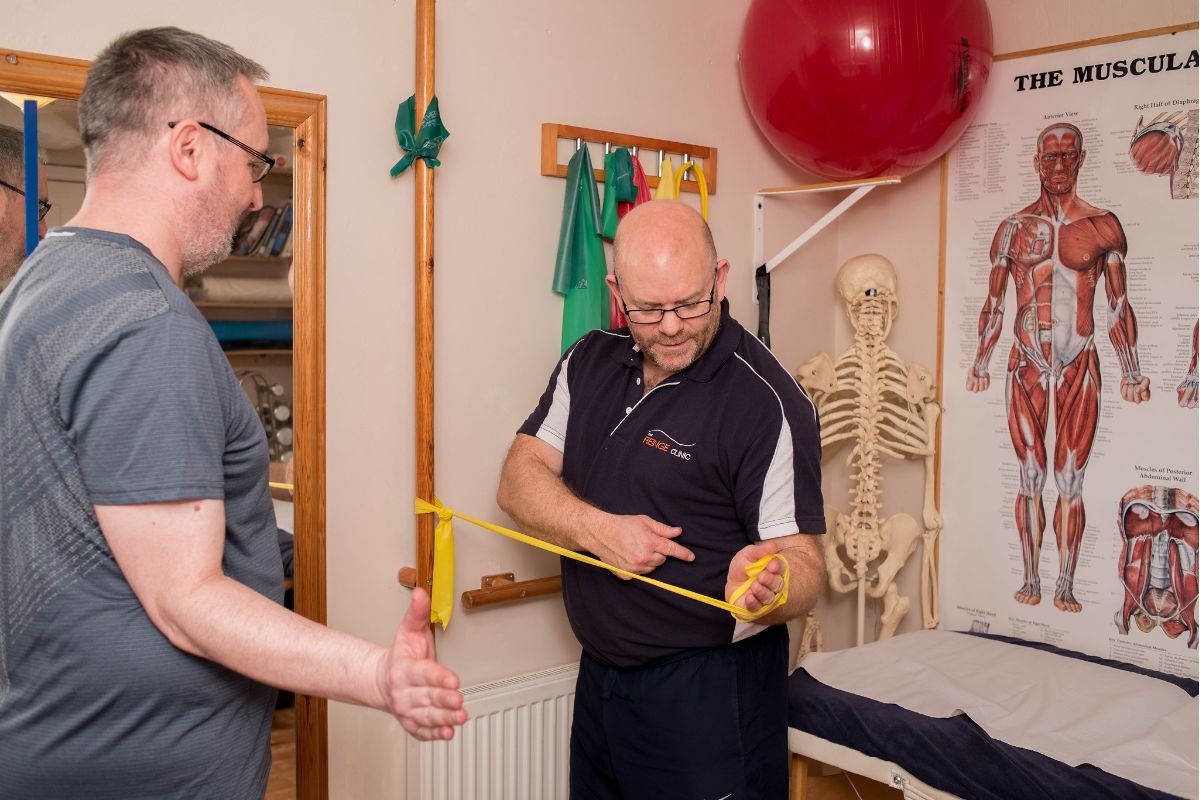Carpal Tunnel Syndrome (CTS) is a common and often debilitating condition that affects millions of people worldwide. It can be incredibly painful and limit one’s ability to perform everyday tasks, especially for those whose occupations involve repetitive hand movements. As Sports Therapists and Physiotherapists, we frequently encounter individuals who are plagued by CTS symptoms. They all share one burning question: “Can Carpal Tunnel Syndrome go away?” In this article, we will explore the causes, symptoms, treatment options, and the potential for CTS to resolve over time.
Understanding Carpal Tunnel Syndrome
To address the question of whether Carpal Tunnel Syndrome can go away, we first need to understand the condition itself. The carpal tunnel is a narrow passageway in the wrist formed by bones and ligaments. This tunnel houses the median nerve, which is responsible for transmitting sensory and motor signals to the hand. When the median nerve becomes compressed or irritated, it leads to the onset of Carpal Tunnel Syndrome.
However, that isn’t the only reason people can experience Carpal Tunnel Syndrome. The nerve that terminates in the wrist, starts in the neck and the nerve line can be irritated at any point in that line. Just because the symptoms are occurring in the wrist, doesn’t mean the cause of the problem is the wrist. Often posture of the neck and shoulders, stresses the nerve and creates the same symptoms of numbness in the wrists.
Causes of Carpal Tunnel Syndrome
There are many reasons for Carpal Tunnel Syndrome, some of which are listed below.
- Repetitive Movements: Repetitive wrist movements, often seen in sports, can contribute to the development of CTS. Athletes, such as tennis players, golfers, or weightlifters, are at an increased risk. But those with repetitive movements in their jobs can also be a risk factor. We see these in Hairdressers, Barbers, Podiatrists and Electricians to name a few.
- Trauma: Direct wrist trauma, such as fractures or dislocations, can damage the carpal tunnel, leading to CTS symptoms.
- Medical Conditions: Certain medical conditions, such as diabetes, obesity, and rheumatoid arthritis, can increase the risk of developing CTS.
Symptoms of Carpal Tunnel Syndrome
The symptoms of Carpal Tunnel Syndrome can range from mild to severe, and they often develop gradually over time. The most common symptoms of Carpal Tunnel Syndrome is tingling and numbness in the thumb, index, and half of the middle finger. This is because these are the areas covered by the median nerve. The numbness is generally most profound at night affecting sleep and often waking people in the middle of the night. If your numbness is on the outside of your hand it is unlikely to be Carpal Tunnel Syndrome and more likely to be another cause which needs to be assessed by a Physiotherapist or Sports Therapist.
So, Can Carpal Tunnel be resolved?
Absolutely, we have very successfully resolved people’s Carpal Tunnel Syndrome, without the need for operations. The key to resolving Carpal Tunnel is to look beyond the wrist. Night Splints are great at helping to calm the nerve in the wrist area and help you to sleep, but to resolve it properly we need to understand why the nerve is being irritated.
Nerves have a fluid supply circulating around them, this helps to keep the nerve safe and flexible while we move. If that fluid supply becomes compromised it can dry the nerves making them irritable. The fluid can become compromised at any point in the line, from the neck to the wrist.
So our job is to work out where the issue is coming from and usually it is down to posture. Perhaps you have rounded shoulders and the nerve is becoming irritated around the clavicle, or you work at a desk and the nerve is becoming irritated due to a forward head posture. Sometimes, it is specifically at the wrist due to overuse of the forearms or over gripping in racket sports.
Once we have worked out where the problem is occurring we need to strengthen and loosen you to return you to the correct posture, we can also mobilise the nerves to help the fluid movement. If you have an autoimmune condition CTS symptoms may suggest this isn’t fully under control and in this case it is worth contacting your specialist who can check your inflammatory levels and help with medication.
Preventing Carpal Tunnel Syndrome
Prevention is always better than cure. To reduce the risk of developing Carpal Tunnel Syndrome or experiencing a recurrence, consider the following preventive measures:
- Ergonomics: When working at a desk and using a mouse, this can create problems in the wrist. Using an upright mouse is a good solution for this as it help the wrist and shoulder to sit in a better position, offloading the nerve line.
- Regular Breaks: Take regular breaks to rest and stretch your hands and shoulders, especially during repetitive tasks. Using a door frame is a great way to stretch out the front of the shoulders and a wall to stretch your wrists several times a day.
- Strengthening Exercises: Strengthening the upper back and shoulders really helps to limit problems with Carpal Tunnel. Take a look at our video on this area for some practical exercises.
- Seek Early Intervention: If you experience any symptoms of CTS, do not ignore them. Seek medical attention promptly for a timely diagnosis and intervention.
Strengthening for Carpal Tunnel?
There are a few simple exercise we can use to regain posture and help woth carpal tunnel.
- The first is in the video link shown above and is for the external rotators of the humerus. This helps the shoulder to realign in it’s joint and helps to stop the shoulders rounding forward.

- To get to the larger muscles of the upper back and resistance band is a great option. These can be bought cheaply online. Standing with your arms in front of you, with your elbows straight, pull the band apart. You should feel the shoulder blade area start to do some work. This helps to avoid a rounded shoulder, bringing the whole chest up into a more neutral position and stopping stress on the nerve line.

- Finally loosening is needed to release all the muscles down the arm, wrist and shoulders, allow the shoulder to return to the correct posture. A Sports Massage is a great way to do this.
So to answer the question, “Can Carpal Tunnel Syndrome go away?” the answer is generally Yes! But it does need a thorough assessment and a personalised exercise program along with a bit of patience! Take a look at our web page on how we help the residents of Kenilworth, Leamington, Warwick and surrounding areas with their Carpal Tunnel issues.
For more information on Carpal Tunnel Syndrome, take a look at this NHS website.